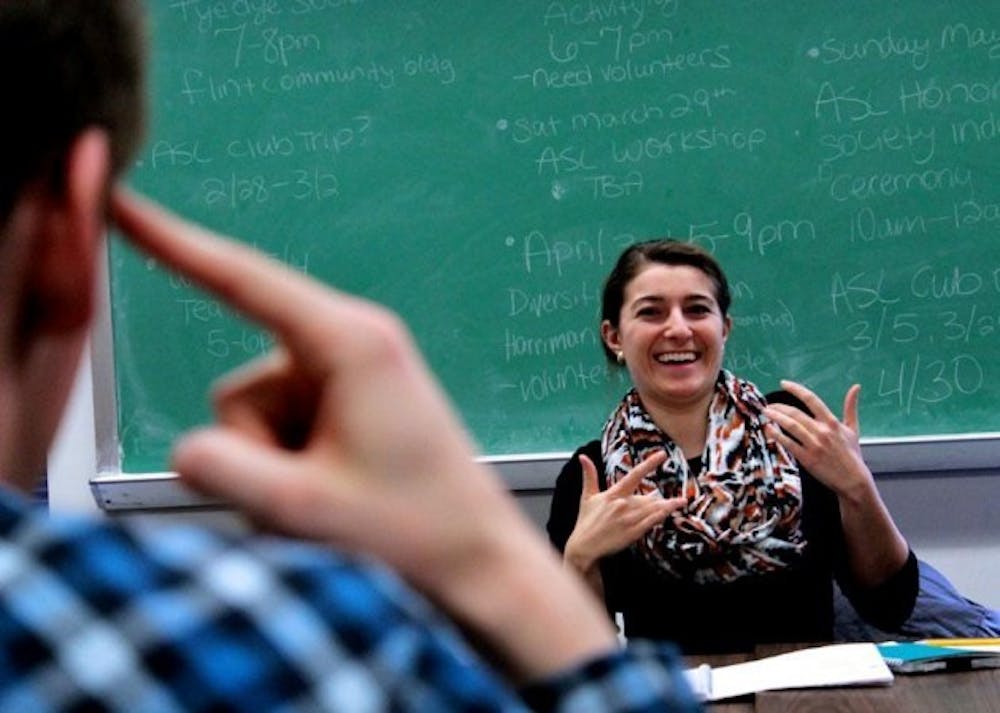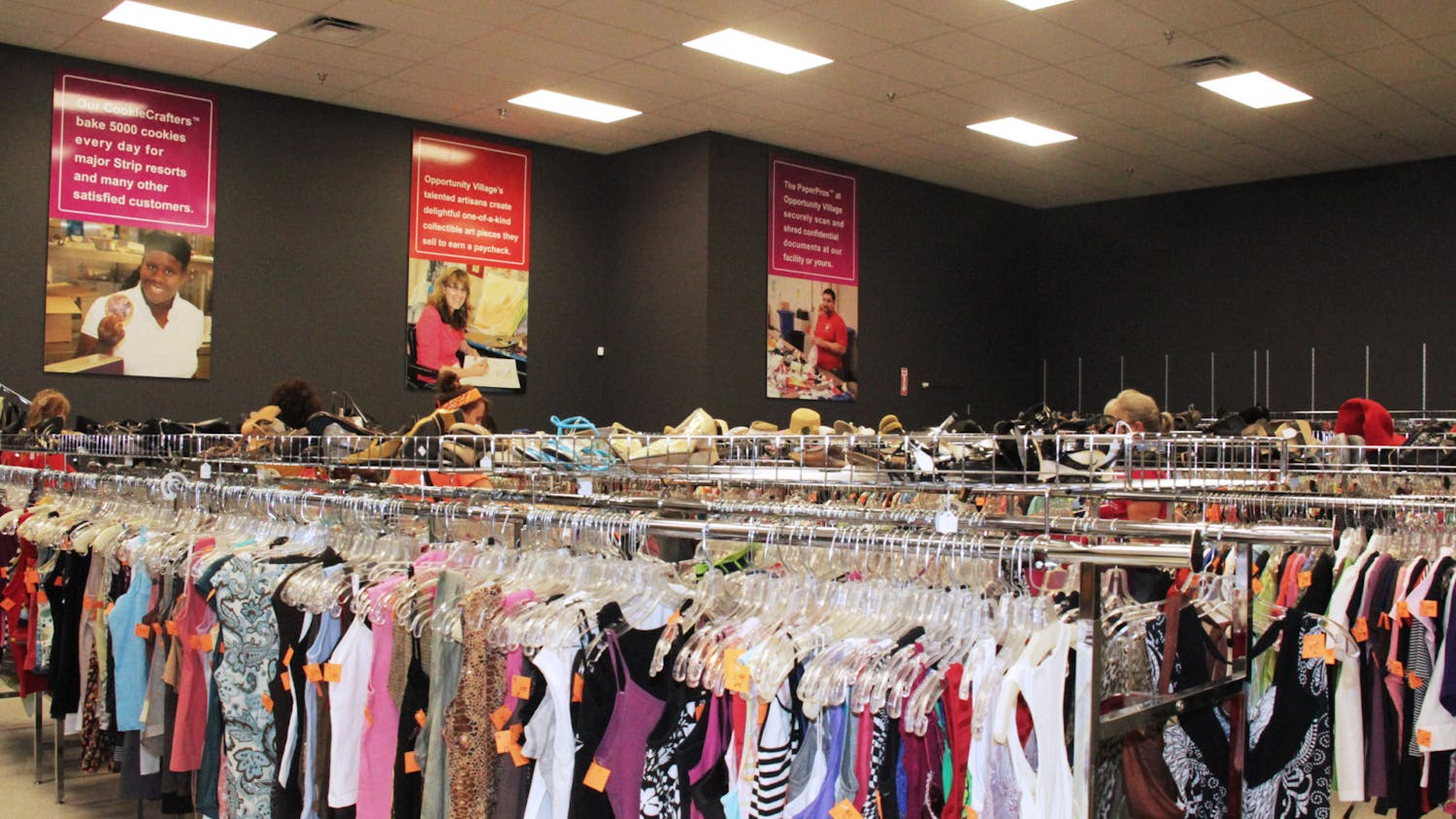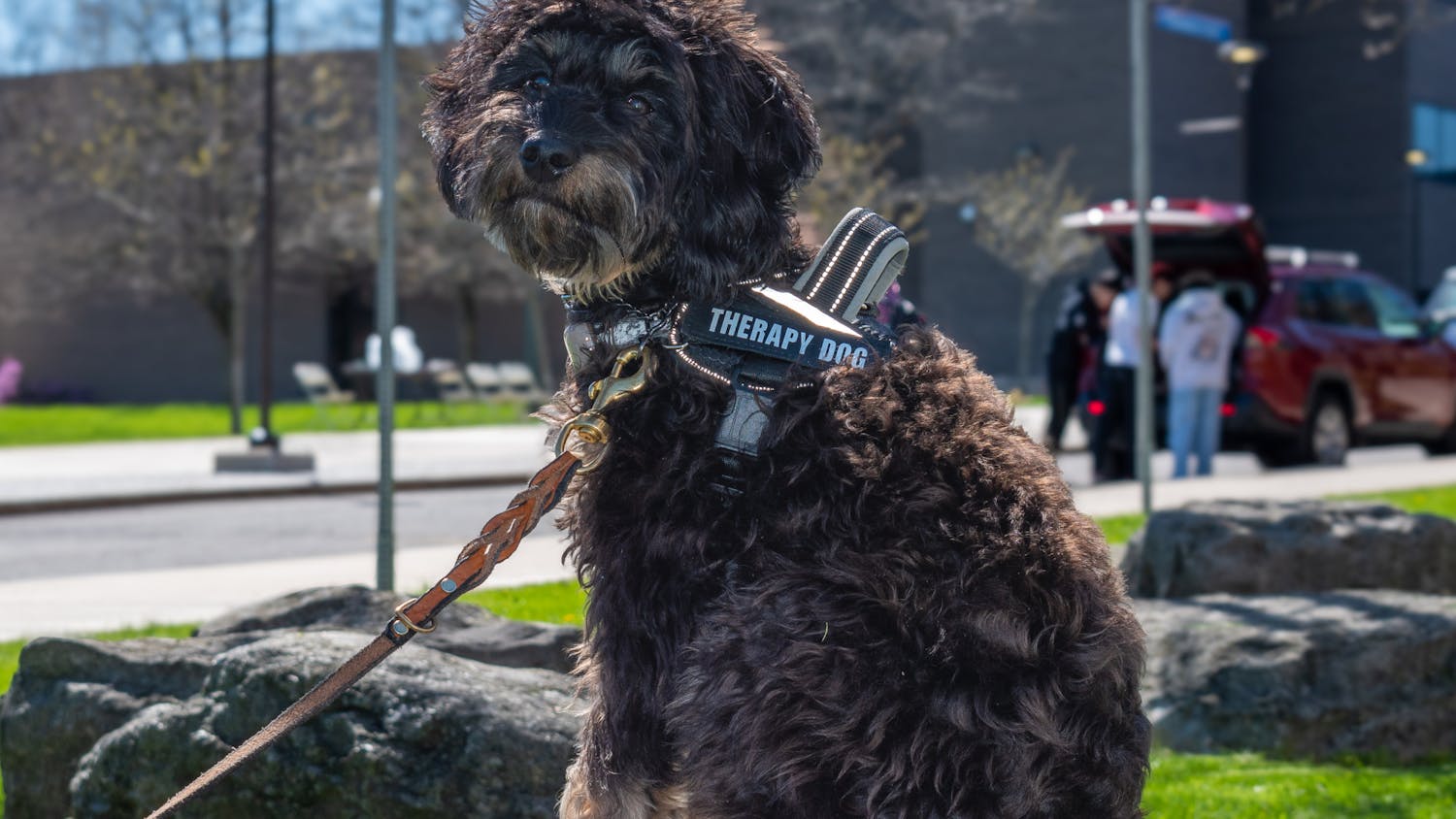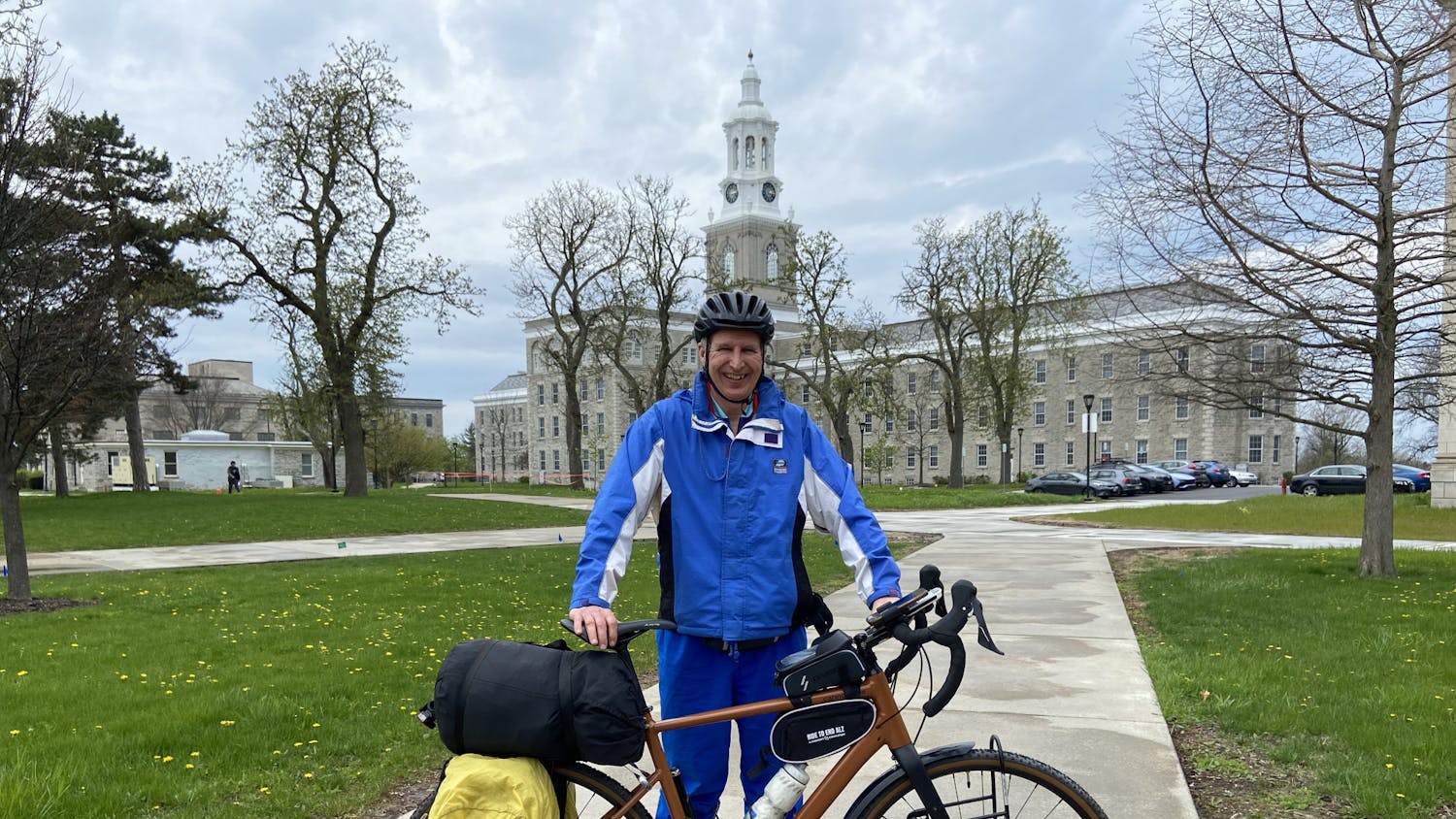A little girl went "number two" in her pants while waiting for her mother in Wegmans' childcare center. Upset and uncomfortable, she clamored for her mom. But the workers at Wegmans couldn't broadcast her mother's name over the loudspeaker, like they usually would in that type of situation.
The girl's mother was deaf. So, Olivia DiPalma stepped in to help.
DiPalma, a senior business major, took charge by using skills she acquired from UB's American Sign Language (ASL) program. She searched the store, found the girl's mother and used sign language to explain the situation.
DiPalma is president of UB's ASL club. There are 20 active participants; attendance at club events ranges from 35 to 150 students. The club hosts two to three events each month, which are geared toward learning and using sign language in the community.
At meetings, members discuss and coordinate upcoming events and practice signing. They also discuss questions about the language and deaf culture. The club aims to connect the hearing community with deaf students at UB, so all are welcome to join club meetings and events.
As president of ASL club, DiPalma has gained a different perspective of the deaf community.
"I believe that deaf people ... have found they are normally misunderstood because no one knows or cares to know the language that they use," DiPalma said. "What I have learned through ASL, UB and the deaf community will truly help me in my future and everyday endeavors."
The ASL teachers who assist the club are deaf, and a few have relatives in the deaf community.
DiPalma is not deaf, and neither is anybody in her family. She never had a "direct personal relationship" with ASL. But after taking the first level ASL class at UB for a language credit, she was inspired to learn more.
She said she felt immediately intrigued by the "visual language," and she has taken every ASL class UB offers. There are currently nine first-year ASL courses and one second-year course available per semester.
"The hands-on, paperless classroom environment and the presentations of the teachers here really keep you focused and intrigued," DiPalma said. "It is a really enjoyable learning experience."
If Emily Glenn-Smith, UB's ASL programming director, needs her students' attention, she bangs on the table until they all look her way. This predilection for noisemaking is just one of the distinctive characteristics that define Glenn-Smith's teaching.
In her classroom, Glenn-Smith avoids verbal communication entirely.
When one of her students doesn't understand the specific sign for a word, she fingerspells what she's trying to say. Sometimes, she types what she wants to say and puts it on the projector, and if a student has a question after class, he or she can text the question and she will respond via text, according to Emily Goodman, a freshman speech and hearing science major and member of the ASL club.
Glenn-Smith grew up with a desire to teach deaf children. Although she was born with the ability to hear, Glenn-Smith's auditory abilities gradually deteriorated over time. At the age of four, she was enrolled in a mainstreamed dual deaf/hearing preschool classroom, not knowing that she herself would become profoundly deaf.
She does not consider her hearing situation "medical." She identifies culturally and linguistically as deaf.
In college, ASL and deaf studies became her passion. She realized she wanted to teach hearing students about the world she lives in. It became important for her to bridge the cultural and language gap between hearing and deaf people.
"Because of my experience in both worlds, I became motivated to teach at the university level," Glenn-Smith said.
Students are inspired by Glenn-Smith's teaching philosophy and style. Glenn-Smith finds she "connects with [her] students on many levels." She is conscious of beginner students and takes time to make sure they understand her signs, according to Goodman. Goodman said club members and students also learn to read Glenn-Smith's lips with her signing.
DiPalma believes Glenn-Smith is the reason behind the strength of UB's ASL program. She said without Glenn-Smith's "determination, hard work and patience," there wouldn't be an ASL program. She's the "backbone" of the organization, according to DiPalma.
Goodman was not involved in anything related to ASL or deaf culture prior to attending UB, but she thought joining the club would be interesting. Prior to her experience with UB's ASL club, she didn't know much about the deaf community or culture.
Glenn-Smith believes students should become involved with ASL, primarily because it's important to learn about other languages and cultures.
"Learning ASL and deaf culture allows for students to develop an understanding of a world that is outside of what they know and many don't even realize exists," Glenn-Smith said.
Emily Dart, a senior linguistics major, took two ASL courses to fulfill a language requirement. She fell in love with the language and the classroom experience, and ended up taking another two courses. After completing the classes, she joined the ASL club.
She didn't realize the courses and her professor, Glenn-Smith, would change her life.
"I got so much more out of the classes than I could have imagined," Dart said. "The UB community should engage in sign language because it's fun, beautiful and a great skill to have. Learning about deaf culture along with the language is so interesting and enriching."
Dart hopes to become fluent to become an ASL interpreter. She believes her continued involvement in ASL club and the deaf community will help her achieve that goal.
"Sign language is incredibly useful in my life and I love meeting people who I can practice my signing with," Dart said. "It even comes in 'handy' at loud parties with my friends who can sign."
Glenn-Smith said she teaches with the hope that her students will not only develop a respect for ASL and deaf culture, but also retain the core values and apply their knowledge in their careers and daily lives. She wants students to leave her course with "a continued respect and passion for learning ASL."
Dart, Goodman and DiPalma believe they are proof that Glenn-Smith has accomplished her goal.
email: features@ubspectrum.com





